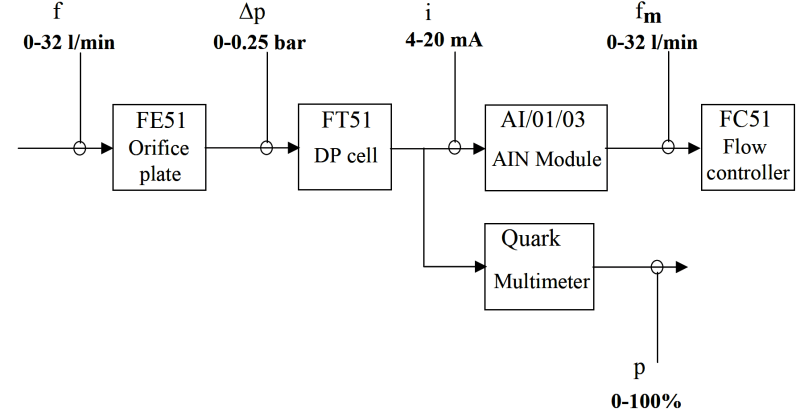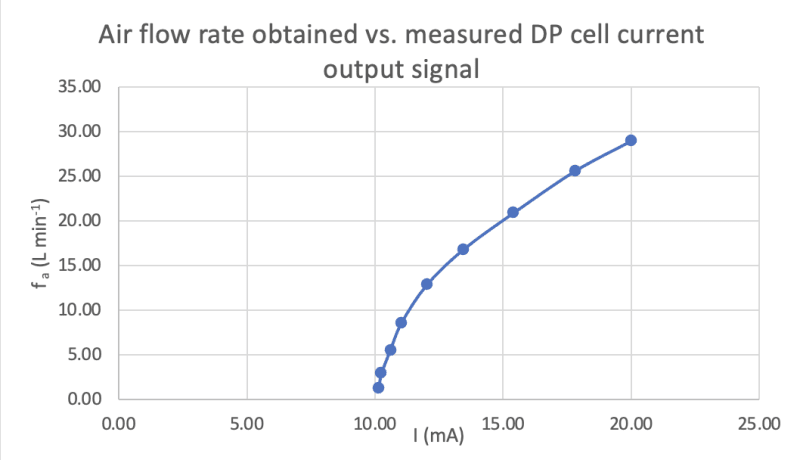vlc
Student
- May 7, 2021
- 3
Hi, I have the following control setup:

For that, I have data recorded for every I/O block, and I am asked to determine the function used by the AIN block to convert from an analogue 4-20 mA signal to a flow value in the range of 0/32 L/m. The plotted data looks like this:

How would you obtain that function?
Thanks for your time

For that, I have data recorded for every I/O block, and I am asked to determine the function used by the AIN block to convert from an analogue 4-20 mA signal to a flow value in the range of 0/32 L/m. The plotted data looks like this:

How would you obtain that function?
Thanks for your time


